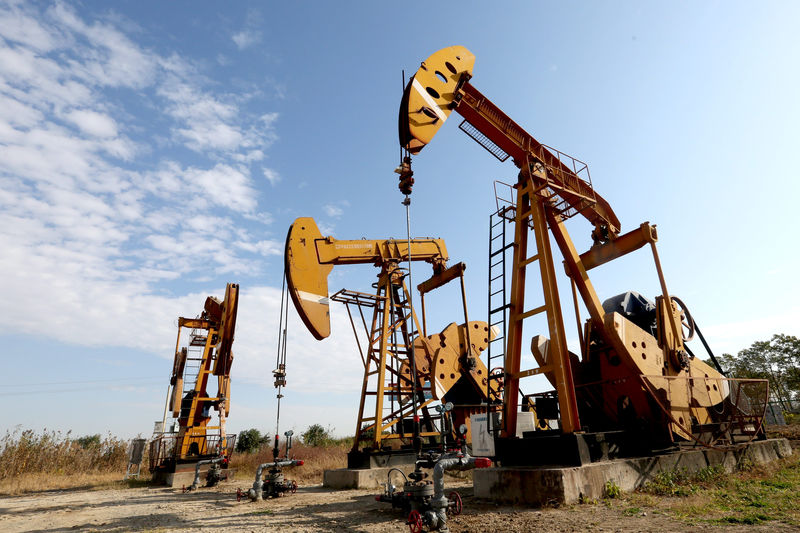Who is Kevin Hassett? Wolfe looks at the Trump ally tipped to become Fed Chair.
Investing.com - Crude prices rallied to their loftiest level in almost four years on Monday, bolstered by a growing consensus in the market that President Donald Trump will move to pull the U.S. out of a 2015 international accord to curb Iran’s nuclear program.
New York-traded WTI crude futures rose to an intraday peak of $70.69 a barrel, breaching the $70-mark for the first time since November 2014.
It was last at $70.50 by 8:10AM ET (1210GMT), up 80 cents, or around 1.2%.
Meanwhile, Brent crude futures, the benchmark for oil prices outside the U.S., tacked on 84 cents, or 1.1%, to $75.71 a barrel, after climbing to $75.89 earlier in the session, its highest since November 2014.
President Trump has until May 12 to decide whether to pull the United States out of a 2015 international accord to curb Iran’s nuclear program and restore sanctions on one of the world's biggest oil producers.
Trump has repeatedly threatened to abandon the deal, reiterating last week that unless European allies rectify the "terrible flaws" in the agreement, he will refuse to extend U.S. sanctions relief for the oil-producing country.
If sanctions are reinstated, that could contribute to tighter global oil inventories, as it would likely result in a reduction of Tehran's oil exports.
Iran, which is a major Middle East oil producer and member of the Organization of the Petroleum Exporting Countries (OPEC), resumed its role as a major oil exporter in January 2016 when international sanctions against Tehran were lifted in return for curbs on Iran's nuclear program.
Concerns over a deepening economic crisis in Venezuela, which has threatened the country's already tumbling oil supplies was another factor supporting prices.
However, a steady increase in U.S. drilling for new production marked one of the few factors tamping back crude in an otherwise bullish environment.
U.S. drillers added nine oil rigs in the week to May 4, bringing the total count to 834, the highest number since March 2015, General Electric (NYSE:GE)'s Baker Hughes energy services firm said in its closely followed report on Friday.
That was the fifth consecutive weekly increase in the rig count, underscoring worries about rising U.S. output.
Indeed, domestic oil production - driven by shale extraction - rose to an all-time high of 10.62 million barrels per day (bpd) last week, the Energy Information Administration (EIA) said.
Only Russia currently produces more, at around 11 million bpd.
In other energy trading, gasoline futures added 0.7% to $2.130 a gallon, while heating oil tacked on 0.6% to $2.166 a gallon.
Natural gas futures were a shade lower at $2.707 per million British thermal units.
